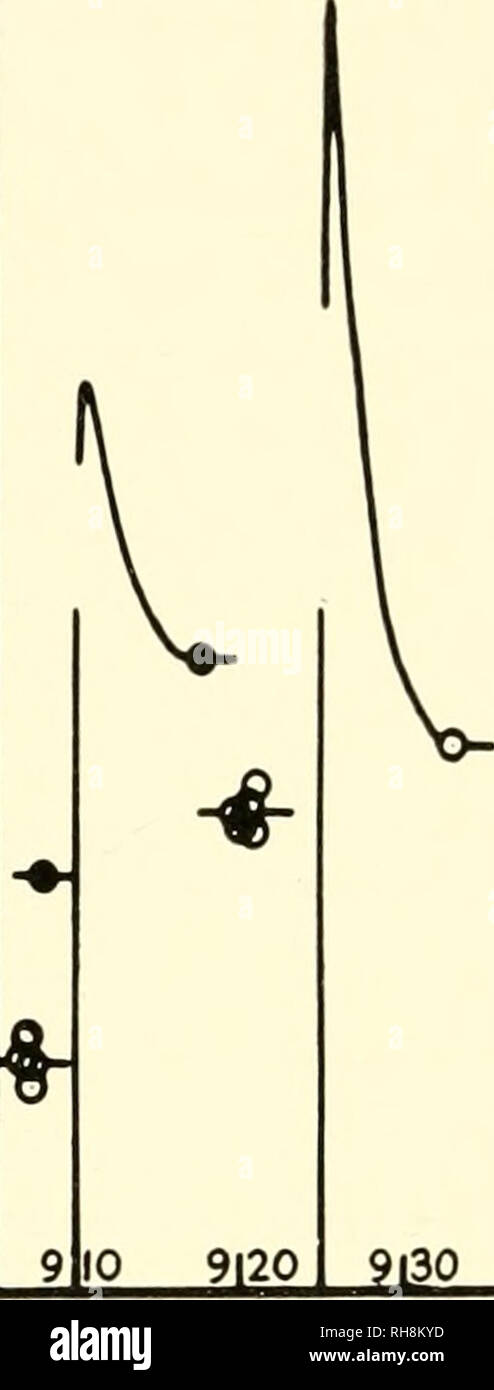. Brain mechanisms and learning, a symposium. Psychophysiology; Learning, Psychology of. Jl^. 4.0 .ilg M â f. >i50 Fu;. 2 Plotting of post-tetanic potentiation and residual potential as in Fig. iB, but on a much reduced time-scale, note time-scale in hours and minutes on abscissae. Ordinates give sizes of mono- synaptic reflex spike in millivolts. L- and Sj dorsal roots severed extraganglionically 38 days previously. The open circles about 5.50 p.m. give reflex spikes in biceps-semitendinosus nerve in response to single volleys in the combined L- and Sj dorsal roots, and the filled circle t

Image details
Contributor:
Library Book Collection / Alamy Stock PhotoImage ID:
RH8KYDFile size:
7.1 MB (109.5 KB Compressed download)Releases:
Model - no | Property - noDo I need a release?Dimensions:
975 x 2563 px | 8.3 x 21.7 cm | 3.3 x 8.5 inches | 300dpiMore information:
This image is a public domain image, which means either that copyright has expired in the image or the copyright holder has waived their copyright. Alamy charges you a fee for access to the high resolution copy of the image.
This image could have imperfections as it’s either historical or reportage.
. Brain mechanisms and learning, a symposium. Psychophysiology; Learning, Psychology of. Jl^. 4.0 .ilg M â f. >i50 Fu;. 2 Plotting of post-tetanic potentiation and residual potential as in Fig. iB, but on a much reduced time-scale, note time-scale in hours and minutes on abscissae. Ordinates give sizes of mono- synaptic reflex spike in millivolts. L- and Sj dorsal roots severed extraganglionically 38 days previously. The open circles about 5.50 p.m. give reflex spikes in biceps-semitendinosus nerve in response to single volleys in the combined L- and Sj dorsal roots, and the filled circle the mean control spike in gastrocnemius nerve, these same conventions being used throughout. The first tetanic conditioning (7500 volleys at 500 per second) is shown by vertical line at 5.55 p.m., and the five other tetanic conditionings (of similar severity) are likewise indicated. The post-tetanic potentiation curves are shown for gastrocnemius and biceps-semitendinosus after first and second conditioning respectively in each of the test series. As indicated by abscissae the vertical shaded columns mark lapses of 2 hours, 20 minutes and 55 minutes respectively, and during the second an injection of nembutal was given (Eccles and Mclntyrc, 1953, with permission o{ xz Journal of Physiology). circulation) prevented any precise determination ot the time constant of decay of residual potentiation, but probably half decay takes at least 3 hours, which would make it about i6o times slower than the decay rate for the normal post-tetanic potentiation after a similar conditioning tetanus. In addition to this investigation on the effect of dorsal root section on the. Please note that these images are extracted from scanned page images that may have been digitally enhanced for readability - coloration and appearance of these illustrations may not perfectly resemble the original work.. Council for International Organizations of Medical Sciences; Fessard, A. (Alfred); Delafresnaye, J. F.